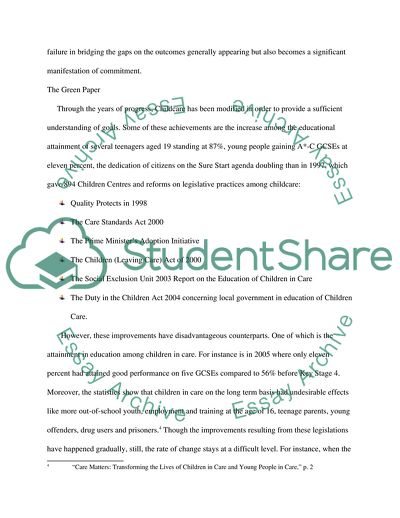Cite this document
(Policy of Leaving Care and Children Essay Example | Topics and Well Written Essays - 2000 words, n.d.)
Policy of Leaving Care and Children Essay Example | Topics and Well Written Essays - 2000 words. https://studentshare.org/sociology/1711479-tma-04-transforming-the-lives-of-children-and-young-people-in-care
Policy of Leaving Care and Children Essay Example | Topics and Well Written Essays - 2000 words. https://studentshare.org/sociology/1711479-tma-04-transforming-the-lives-of-children-and-young-people-in-care
(Policy of Leaving Care and Children Essay Example | Topics and Well Written Essays - 2000 Words)
Policy of Leaving Care and Children Essay Example | Topics and Well Written Essays - 2000 Words. https://studentshare.org/sociology/1711479-tma-04-transforming-the-lives-of-children-and-young-people-in-care.
Policy of Leaving Care and Children Essay Example | Topics and Well Written Essays - 2000 Words. https://studentshare.org/sociology/1711479-tma-04-transforming-the-lives-of-children-and-young-people-in-care.
“Policy of Leaving Care and Children Essay Example | Topics and Well Written Essays - 2000 Words”. https://studentshare.org/sociology/1711479-tma-04-transforming-the-lives-of-children-and-young-people-in-care.


